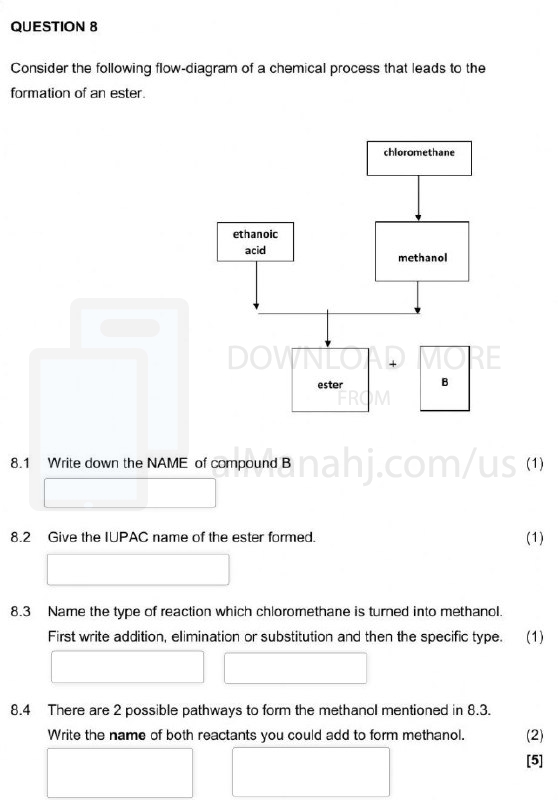File info: An organic chemistry test, Part 2, is an assessment designed to evaluate students' understanding and knowledge of advanced topics in organic chemistry. This test focuses on building upon the foundational concepts covered in Part 1 and delves deeper into organic reactions, mechanisms, and synthesis. Here's a description of what an organic chem test, Part 2, might include:
1. Test Format: The test format description provides an overview of the structure and organization of the test. It may specify the number of questions, the time limit, and the types of questions or tasks included. The format may include multiple-choice questions, short-answer questions, problem-solving exercises, and reaction mechanism analysis.
2. Reaction Mechanisms: The test assesses students' understanding of various reaction mechanisms in organic chemistry. Students may be asked to identify reaction intermediates, propose reaction mechanisms, or predict the products of specific reactions. This section tests their ability to apply knowledge of electron movement, stability of intermediates, and stereochemistry.
3. Synthesis and Retrosynthesis: The test evaluates students' skills in organic synthesis and retrosynthesis. They may be presented with a target molecule and asked to propose a viable synthetic route or identify starting materials and reagents necessary for the synthesis. This section assesses their ability to apply knowledge of functional group interconversions and select appropriate reactions.
4. Spectroscopic Analysis: The test includes questions related to the interpretation of spectroscopic data, such as infrared (IR), nuclear magnetic resonance (NMR), and mass spectrometry (MS). Students may be required to analyze spectral data to determine the structure or functional groups present in a given compound. This section tests their ability to correlate spectroscopic data with structural features.
5. Advanced Concepts: The test covers advanced topics in organic chemistry beyond the basics. This may include topics such as aromaticity, pericyclic reactions, reactive intermediates, or organometallic chemistry. Students may be asked to explain concepts, propose reaction mechanisms, or solve problems related to these advanced topics.
6. Problem Solving: The test includes problem-solving exercises that require students to apply their knowledge of organic chemistry principles to solve complex problems. These problems may involve multi-step synthesis, retrosynthetic analysis, or the interpretation of experimental data. This section assesses their ability to integrate and apply concepts learned throughout the course.
7. Critical Thinking and Analysis: The test may include questions that require students to think critically and analyze organic chemistry concepts beyond memorization. They may be asked to evaluate experimental procedures, propose modifications to reaction conditions, or analyze the outcomes of specific reactions based on underlying principles. This section tests their ability to apply logical reasoning and draw conclusions.
8. Overall Mastery of Organic Chemistry: The test provides an overall assessment of students' mastery of organic chemistry topics covered in Part 2. It evaluates their understanding of reaction mechanisms, synthesis strategies, spectroscopic analysis, advanced concepts, problem-solving skills, and critical thinking abilities.
The purpose of the organic chemistry test, Part 2, is to evaluate students' comprehension and proficiency in advanced organic chemistry topics. It aims to assess their ability to apply knowledge of reaction mechanisms, synthesis, and spectroscopic analysis to solve complex problems and analyze experimental data. The test results provide feedback to students and instructors, guiding further learning and identifying areas for improvement in organic chemistry understanding and application. |
